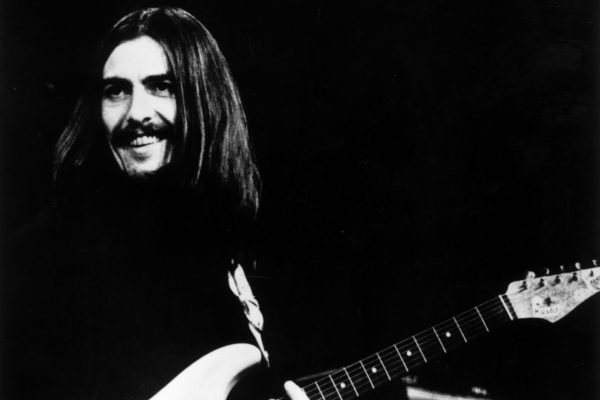Editor’s Note: Eoghan Lyng is a longtime contributor to Culture Sonar, having written many of our most popular posts. We’re pleased to share a look at his new book about George Harrison.
***
Turns out, the “quiet Beatle” wasn’t so quiet after all. Especially in the decade after the Fabs’ heyday. The new book, George Harrison In the 70s, by Eoghan Lyng examines how Harrison navigated a turbulent decade, both personally and professionally.
Using each of his 70s albums as chapters, we trace Harrison’s emergence from the Beatles into an artist completely his own. Beginning with the masterpiece, All Things Must Pass, we get a sense of the enormous backlog of material that had been waiting to be unleashed on “the material world.” Having watched the Peter Jackson documentary, Get Back several times, this writer was stunned at the George songs that the Beatles passed on that later showed up on George’s debut. It was a true, “What were you guys THINKING (or not)?” moment. Harrison was neatly vindicated.
The 70s found George trying to step away from a legacy impossible to step away from. At the start of the decade, he was still (uncomfortably) saddled with the Beatle label. He was married to Pattie Boyd and several years into his fascination with spirituality. By the end of the decade, he’d gone through two bitter divorces (one from Boyd and the official legal one from the Beatles.) He was happily remarried to Olivia Arias. His devotion to his faith had evolved from newbie enthusiasm to the bedrock of his being. He was giving a more cheerful wink and a nod to his legacy of a decade and a half prior.
Lyng works through the albums Harrison released in the 70s, not just doing dives into individual tracks (although he does that in an especially poetic way), but also providing Life Context around each. The reader gets a look at what was happening in the singer’s life that shaped the songs and the projects overall. Example: Dark Horse was, pardon the pun, a rather dark period. His marriage to Boyd was ending, his drug use increasing, and the necessary tour for the album a strain… in more ways than one.
Try as he might, Harrison could never escape his Beatle-ness. Lyng interweaves what was occurring in the lives of his mates at the same time. Competition? Payback? Support? Despite being officially broken up, the bonds formed in those intense days of Liverpool, Hamburg, and subsequent worldwide mania would never completely disappear. Tracking what was happening in the 70s solo careers of Lennon, McCartney, and Starr adds an interesting counterpoint to Harrison’s work during that same time.
What’s made clear is that, during the 70s, the work produced by Harrison was equal to – and often surpassed – many of his bandmates’ solo projects. It’s accepted lore that Lennon and McCartney were the “it” factor in the Beatles; this book clearly shows that George stood equal to them as a musician and songwriter, but rarely got the chance to truly shine within that particular ecosphere. The 70s was the decade that offered him a place to stretch out, and the book does a great job of exploring his unique musicality. Sometimes there were hits, sometimes there were misses. At the center of it all, though, were Harrison’s deep personal convictions; he was never doing it for commercial success. He’d already had that. In spades.
George Harrison: In the 70s traces his path from the hectic world of commercial music (and the things required of that – which he hated) and fan expectations, into the quiet bliss of gardening and fatherhood, and later interests in racing and moviemaking. Lyng makes wonderful points on the impact that Harrison’s Handmade Films made upon British cinema.
Harrison’s well-known spiritual beliefs emerge as not just a 60s “fad” but something that deepened and evolved through the years. While some fans didn’t appreciate his somewhat in-your-face approach at the start of the 70s (especially when he released a whole album of chants), by the end of the decade the man and the mantra were one. Lyng’s book paints a warm, engaging portrait of a cultural icon whose music is the lasting record of his journey, both spiritual – and one that was very, very human.
-Cindy Grogan
Photo: Getty Images



I’m humbled by this lovely review. Thank you.
Oy! Another Beatles book I have to get! Sounds great.
I imagine it was difficult to stand out during the Beatle years. I think George and Ringo got the recognition they so deserved after the break-up.
Saw George in concert in 1975 , I still talk about it🥰. Saw Ringo at an event much later.